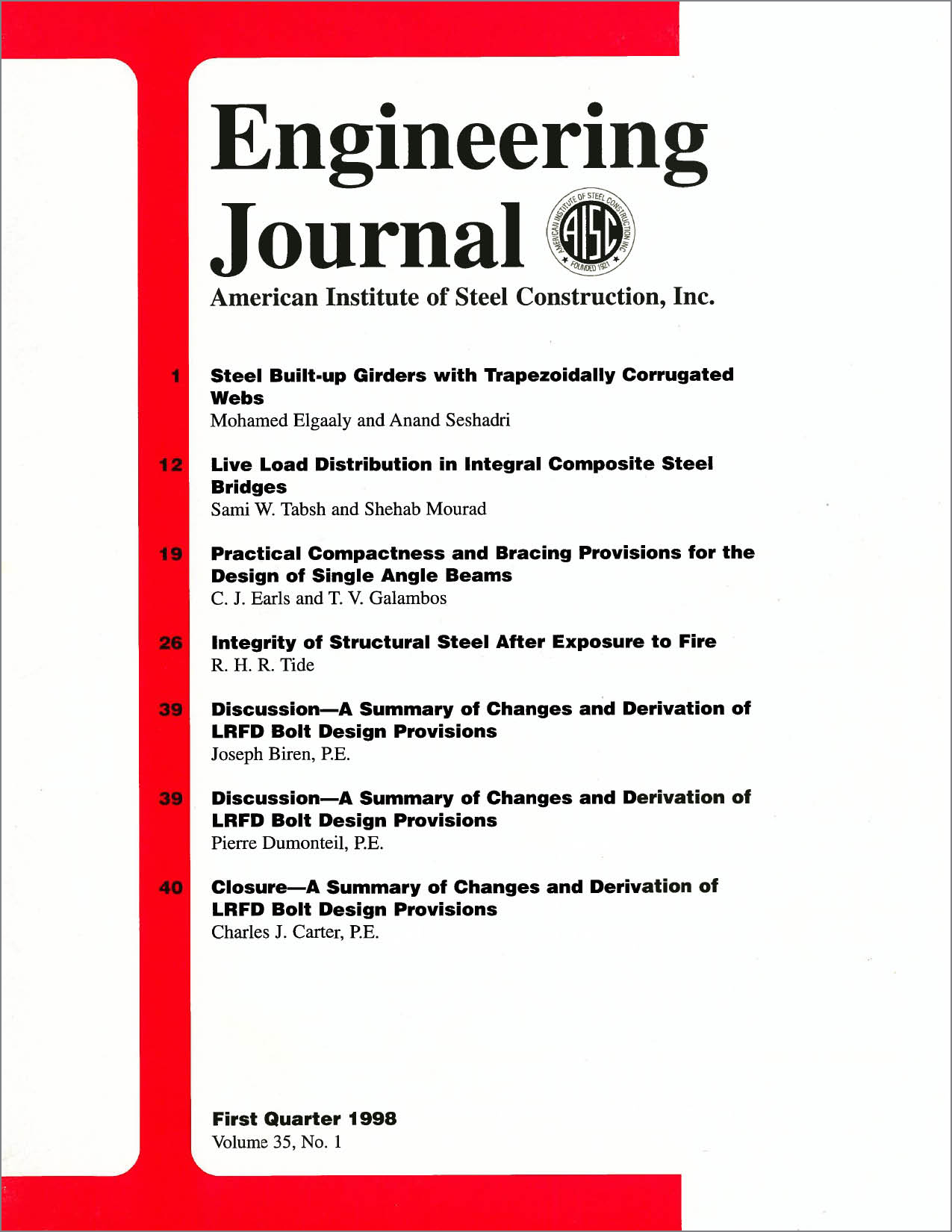Live Load Distribution in Integral Composite Steel Bridges
DOI:
https://doi.org/10.62913/engj.v35i1.693Abstract
In recent years, there has been an increased interest in integral bridges for highway applications due to their inherent economy, serviceability, and strength. This study deals with the live load distribution of integral composite steel bridges near the abutments. Girder distribution factors for shear and bending moment in interior as well as in exterior beams are determined. A comparison between the response of integral bridges and their jointed counterpart is also included. Single and continuous spans are considered in the investigation. The applied loading is composed of several side-by-side HS20 trucks. Linearly elastic finite element analysis is used to analyze the three-dimensional bridge systems. The results of the study indicated that shear in the interior beams and the corresponding girder distribution factor are lower in integral bridges than in simply supported bridges. As the pile length to fixity increases, the shear and moment in the beams near the integral abutment decrease. Further, as the length of the wingwalls in integral bridges increases, the shear and moment in the interior beams increase.

